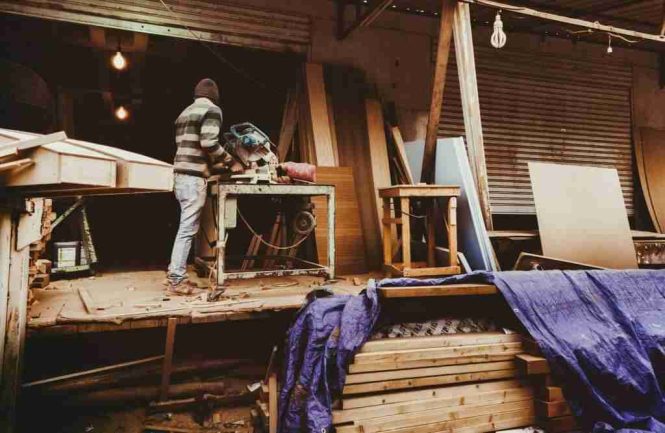

Choosing the right wood for your home improvement project is paramount for achieving a beautiful and lasting result. Whether you’re building a new deck, renovating a kitchen, or simply refreshing your interior design, the type of wood you select can drastically impact the overall look and feel of your home. This guide will walk you through the essential steps in selecting the ideal wood for your home improvement needs, from understanding the different types of wood to considering your budget and the specific application. Let’s explore the fascinating world of wood and discover how to choose the right wood for your home improvement project.
Understanding Different Types of Wood
Hardwood vs. Softwood
Hardwoods and softwoods are the two primary categories of wood. Hardwoods, derived from broadleaf trees, are known for their durability and often higher cost. Examples of hardwoods include oak, maple, cherry, and walnut. These woods are prized for their strength, density, and rich grain patterns, making them ideal for furniture, flooring, and cabinetry. Softwoods, originating from coniferous trees, are generally less expensive and more readily available. Pine, fir, and cedar are common softwoods frequently used in construction projects due to their affordability and structural integrity. Choosing the right type depends on the specific application.
Considering Your Budget
Finding Affordable Options
Budget plays a significant role in your wood selection. While premium hardwoods like mahogany or teak are exceptionally beautiful, they often come with a hefty price tag. Fortunately, there are many affordable options that can deliver a similar aesthetic. Engineered wood, a composite material made from wood fibers, is a cost-effective alternative to solid wood, offering good stability and durability, especially useful for flooring. Other cost-effective choices include certain types of softwoods, depending on your project. A well-planned budget can help you choose the perfect wood for your project without breaking the bank.
Evaluating the Application
Specific Wood for Different Purposes
The intended use of the wood significantly impacts your choice. For exterior applications like decks or fencing, you’ll need a wood resistant to moisture and decay. Pressure-treated lumber is often a popular choice for this purpose, adding to its durability and longevity. In contrast, for interior applications like kitchen cabinets or furniture, the aesthetic appeal and workability of the wood are usually prioritized. Factors such as density and grain patterns contribute to the overall aesthetic of the final product. Consider the project’s scope when assessing the best wood choice.
Factors Influencing Wood Selection
Aesthetic Appeal
Wood grain and color are crucial aspects to consider. Different wood species have unique and distinctive patterns, affecting the overall visual appeal of the project. Oak, with its intricate grain, often adds a classic appeal. Maple, known for its smooth and uniform grain, lends itself well to a contemporary aesthetic. Consider the existing design and overall style of your home when selecting the wood type that will complement your project best.
Wood Durability and Maintenance
Long-lasting Wood Solutions
The durability of the wood chosen is another critical aspect in choosing the right material for your home improvement project. Some woods naturally resist rot, insects, and decay better than others. This factor is particularly important for outdoor applications. Consider the level of maintenance needed for the chosen wood. Some woods require more frequent care and maintenance to ensure longevity, which could affect your decision process.
Choosing Sustainable Options
Eco-Friendly Wood Choices
With growing concerns about environmental impact, opting for sustainable wood sources is becoming increasingly important. Look for certifications like Forest Stewardship Council (FSC) to ensure the wood comes from responsibly managed forests. This approach helps minimize environmental damage and promotes long-term forest health. Choosing sustainably sourced wood demonstrates a responsible approach towards home improvement.
Professional Advice
Expert Consultation
If you’re unsure about the best wood choice for your project, consider consulting a professional. A carpenter or contractor can offer valuable insights, assess your specific needs, and recommend the best wood type, ensuring your project meets its desired aesthetics and durability goals. Don’t hesitate to ask for recommendations or seek opinions from trusted sources.
Additional Tips
Helpful Information
When purchasing wood, verify the quality and condition of the lumber. Look for straight grains, minimal defects, and proper moisture content for the intended application. Proper wood preparation is crucial for ensuring a long-lasting finish for the entire project.
Modern Wood Alternatives
Beyond Traditional Choices
In addition to traditional wood types, there are innovative and modern alternatives, including engineered wood products. They offer advantages like greater stability and moisture resistance, broadening your options for home improvement projects.
In conclusion, choosing the right wood for your home improvement project is crucial for both aesthetics and longevity. Consider your budget, desired style, and the specific application when making your selection. Don’t hesitate to seek professional advice from a contractor or a skilled carpenter for guidance on the most suitable hardwood for your project. Visit our website for a deeper dive into the wood species and finishes that will best enhance your home improvement goals! Explore our vast selection of high-quality wood and let us help you build the home of your dreams.